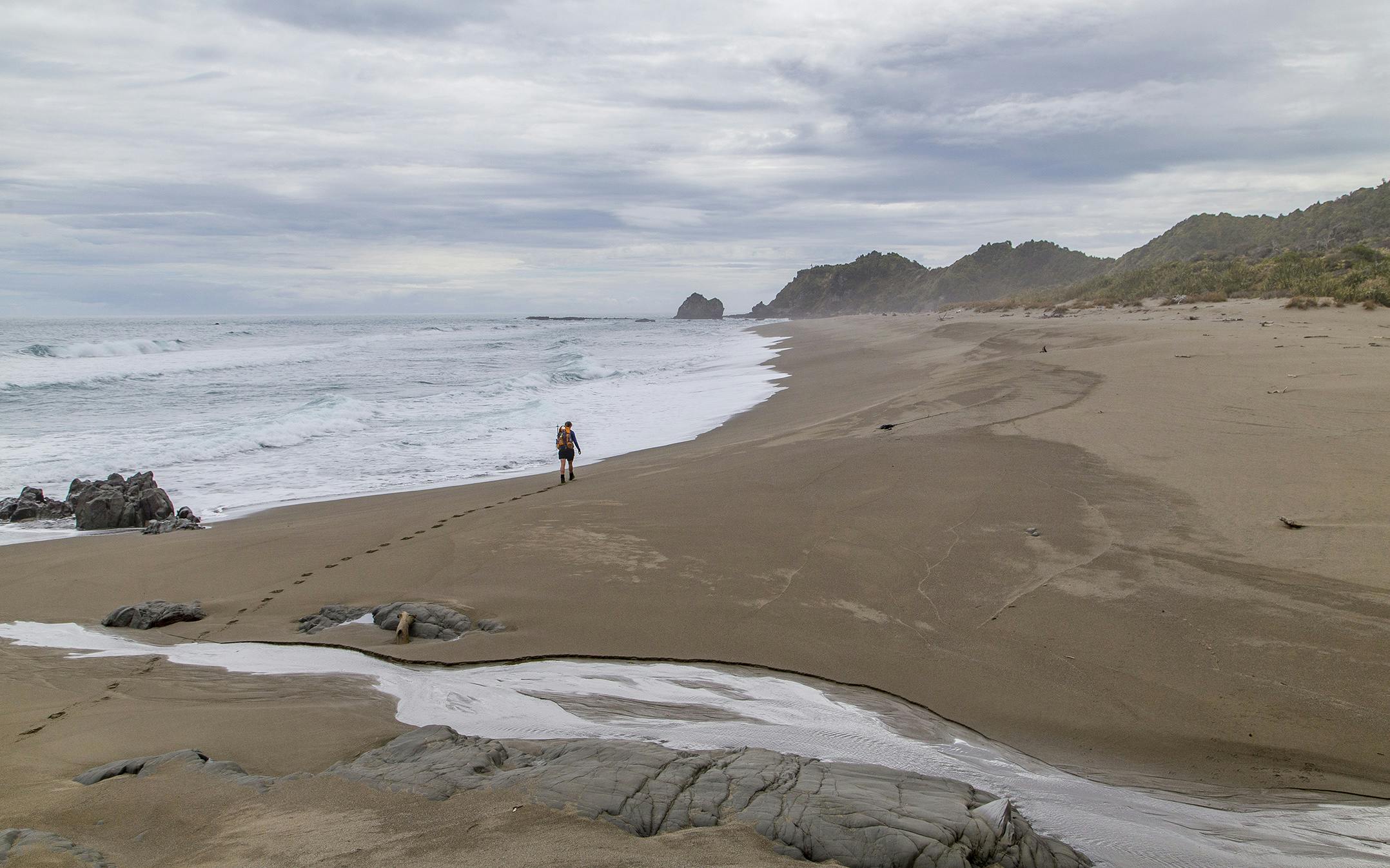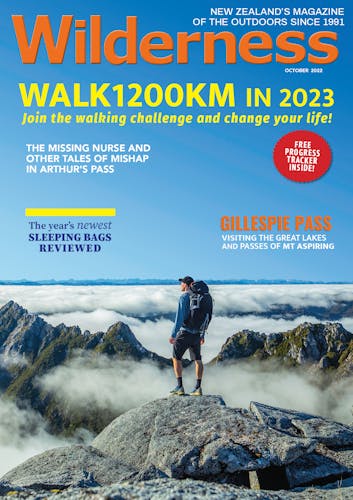What do we need to think about when considering a tramp that includes sections of beach walking?
Most people think beach walking will be easy as it’s flat and usually more familiar than bush.
Yes, it can be fun, but walking along a beach should not be underestimated. Here are five things to consider about coastal tramping.
Footwear: Light footwear is often chosen rather than boots, but consider also the non-beach component of your walk. If you need boots for most of the trip, you might use light shoes that can double as hut or camp shoes for the beach section. It’s important to prevent sand from getting into your shoes and causing blisters. Clean and dry your feet carefully, shake out socks and empty sand from shoes. Use a light gaiter or even tie a cloth or a sock around the top of your shoe to keep the sand out.
Tides: Before leaving, check the times and height of tides, what the beach is like when the tide is in and sea conditions for the area. The easiest walking is in the intertidal zone on firm sand, as walking on soft sand is energy sapping. Some beaches are also littered with driftwood, which can be time-consuming and tiring to negotiate, or there may be nowhere to walk at high tide with the water pushing against a cliff, seawall or private property. Be wary of rogue waves that can knock people over.
Weather: On a beach there is minimal shade and the water and sand reflect the sun. In very hot conditions it may be better to walk in the early morning or the evening if the tides are right. If it is windy, sand will blow about and you will have no protection from that or from rain. If you are planning on swimming, check the currents in the area before your trip so you know if and where it is safe to enter the water.
Estuaries: Before beginning, check for creeks, streams and rivers feeding into the sea. Ensure these are crossable in normal flows at any tide, or if arrival times need to be managed so as to cross safely. Remember that tide heights vary daily, so what may be crossable on one day may not be on another.
Rain in the headwaters will raise river levels, even when there is no rain at the beach, and in an estuary, high river levels increase at high tide. Have a plan if you can’t cross: wait it out, go back, or travel to a bridge or an alternative route.
When crossing, take care to monitor the current as it may move more swiftly at certain points of the tide. It is safer to cross on an incoming tide, as an outgoing tide could sweep you out to sea if you lose your footing. Safe crossing points may change, so documented crossing points may no longer be the best.
If you plan to collect drinking water from the river, remember it may be brackish for some distance upstream.
Wildlife: Beaches are resting places for seals and other marine mammals. Never go too close or get between these and the sea.
As well, many sea birds nest on beaches and in sand dunes. Their nests can be hard to spot, so take care and steer clear if you see them. If a bird puts on a broken wing display or chases you, allow it to take you away from the nest.
Dunes are fragile and home to many birds, lizards and other creatures. It is best to keep out of them or stick to existing trails.
– Heather Grady is an instructor with Outdoor Training New Zealand.








